SOUL CYCLE’S RIDE TO NOWHERE
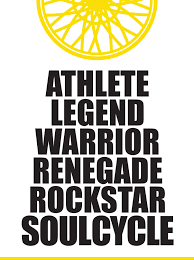
Last fall, my newly graduated daughter moved to NYC to pursue a career in acting and singing. Like many young people following this dream, they pile on jobs to support themselves like layers of long underwear and sensible sweaters from a Minnesota winter (where she was moving from). In no time, she cobbled together catering gigs, nannying jobs and a part-time position at Soul Cycle where she commiserated with fellow actors, singers and dancers, working for minimum wage and riding for free after their shift, while serving the elite clientele of a NYC Soul Cycle studio. She loved her co-workers. It was there, during the long, dark winter months, after she got up at 5 am to open at 5:30 or 6, that the staff would share audition stories once the Soul Cycle moms, celebs and devotees were checked into their classes. Once the crush of morning riders’ needs and demands were met – beyond their $42 class, $10 juice or space on the tiny rack for the pile of $1000 Canada Goose down coats – the young women and men in their cheerful yellow t-shirts and lycra would hustle to make each rider, class, and studio community experience deliver far beyond the endorphine-driven mission of physical fitness. The company itself promises to help followers to ‘find your soul.’ Who doesn’t want that? You can almost hear Jerry Maguire whispering at the end of a sweaty, darkened studio ride, “you complete me.” Soul Cycle certainly delivered on it’s brand promise to be ‘more than a workout’ last week when members and employees alike where shocked and horrified to learn that one of their investors, Stephen Ross, was hosting a Trump fund-raiser in the Hamptons for a mere $250,000 a plate. Now, coupled with the brand identity of finding their soul, the community of Soul Cycle was faced with whether or not to listen to their newly found souls screaming, ‘Alert! Alert! Alert!’ It seems my daughter listened, and quit just a few days after. The fallout from cancelled memberships and quitting employees continues. But what does this mean for Soul Cycle or other brands with values-based promises and darker underbellies of owners who don’t share those values? Does ‘eating your cake and having it too’ come to mind? Essentially, we can’t get those endorphine-loaded, true-identity, perfect brand values for no trade off. Everything we buy, and I mean everything, has a trade off. I was fortunate to work for some of the early adopters of genuinely progressive businesses before the mega-corporations started to buy their ‘value’ and the millions of consumers who followed them religiously. But one by one, the biggest brands in the world gobbled up these organic, fair trade, sustainable, values-based brands with the hope that you wouldn’t notice. If the Soul Cycle parable teaches us anything, it’s about the ride – where are you going, with whom, and for what? As long as you are clear, you won’t be disappointed. Like any brand whose followers are quick to pile on positive brand attributes and values imbued with their own identities, the Soul Cycle community got carried away. As consumers, it’s our jobs to vote with our wallets, to walk our talks whether vegan, fair trade, sustainably-sourced, LGBTQ –friendly or downright decent. It’s a tricky world out there, and we’re all implicit in supporting things that have darker under-bellies than we realize. But when the light shines on the truth, that’s the moment that matters. Do we buy, not buy, support, endorse, patronize or walk? Although my daughter walked away from Soul Cycle, she will continue to cobble gigs together, but she’ll be fine. My husband and I have worked in social impact work with brands, companies and NGOs our entire careers, so she has some knowledge. But the Trump fundraiser last week, and so many other truths that have come to light, make the knowledge easier for all of us to access, and to ask our souls, is it really worth it? I hope not. All Bogs
TRUTH IS A HEAVY WORD THESE DAYS.
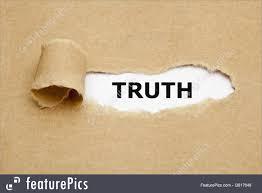
As soon as we read it, we start second-guessing who is saying what, to whom and why. Feelings of uncertainty and cynicism start to arise. And these days, when the societal climate is tense and uncertain, truth and its opposite, weigh us down. It doesn’t’ have to be this way. In fact, I am here to suggest a truth-induced silver lining. At TRU2U, we use the concept of truth to elevate, inspire and engage organizations by reviewing old truths, discovering new truths and mining gems of truths to steer, guide and elevate an organization. And while organizations may think they know their truths, what’s true to one organization (even ones addressing the same or a similar set of social change issues), can be vastly different from another’s. Many things guide our organizational truths. These include our original mission, our first set of stakeholders, our goals, funders, leadership team and staff. But as we evolve, grow and diversify in our work to address social change issues, we don’t tend to re-ask the key questions that got us going in the first place. These can be essential to driving our ultimate success. Rarely do we stop to assess the core strengths of our changing staff and leadership, or the current status of our ever-changing issues -the ones we actually seek to address and solve. We have worked with many organizations over the last 20 years on a wide range of social and environmental impact issues. In our process of conducting branding, marketing, developing strategic plans, communications plans or roadmaps, we inevitably would uncover truths from inside an organization from its leadership, staff and target audiences. All of these truths ended up guiding and, in some cases, driving the strategy. They were what served as key points of differentiation. And once they were written down, said out loud, discussed and refined, they became the new beacon and force for driving the organization to become its best self. We all know the saying about the shoemaker’s kid never having shoes. If your organization is the shoemaker here, it’s because you are too busy solving the world’s biggest issues. We know because we have seen it – admired your work and heard your kid complain about not having shoes. Once we were able to help you to pause long enough to make the shoes, we ended up helping you to become your best in social change and purpose. And you did it by being true. Imagine, using truth as a stimulating, energizing topic – fun even! In this political climate, we cannot only imagine, we can show you how. At TRU2U, we work with companies and non-profits to improve the ways of addressing BIG issues. We help you be better at what you already do to achieve social and environmental impact through a process that uncovers the hidden truths of your organization. We see these truths as gems, extracted from the talent and resources of your individual organization -ones you don’t see. We call this being more TRU2U, and to those you serve. To learn more, visit tru2u.co. All Bogs
BUY THESE BIRDS.
As CSR professionals, it’s good practice to seriously challenge a corp/non-profit partnership that is trendy, only consumer-focused or without long term, measurable impact. One could call the All-Birds/Audubon partnership one of those. That is, until David Yarnold, CEO of Audubon, turns it into a new no apologies partnership precedent. “At the end of the day, the proceeds here go to an organization that comes to work every day to fight climate change and to help save the world. If you want to argue with that, feel free.” Congrats to David who is challenging anyone who dares come between what could raise real money, attract young people to birds and set a new CSR precedent – #feelfreetoargue. Love that. In fact, we should quote the our non-profit scientists and CEOs more on the issues of which they are experts – in climate, science, conservation or any other issue. Let the experts be the poster children (or adults), along with their species (in this example, 5 adorable birds), who capture the attention of consumers better than sneakers. Take the Allbirds partnership, for example. You can imagine an ad in thee store that reads: Buy these shoes. Some of your $$ (never enough) goes to support the Audubon staff who come to work everyday to fight climate change and save birds. Then, go to audubon.org and give more, volunteer or learn. My kind of campaign. kudos, David, #noapologies. All Bogs
CSR IS IN NEED OF MARIE KONDO
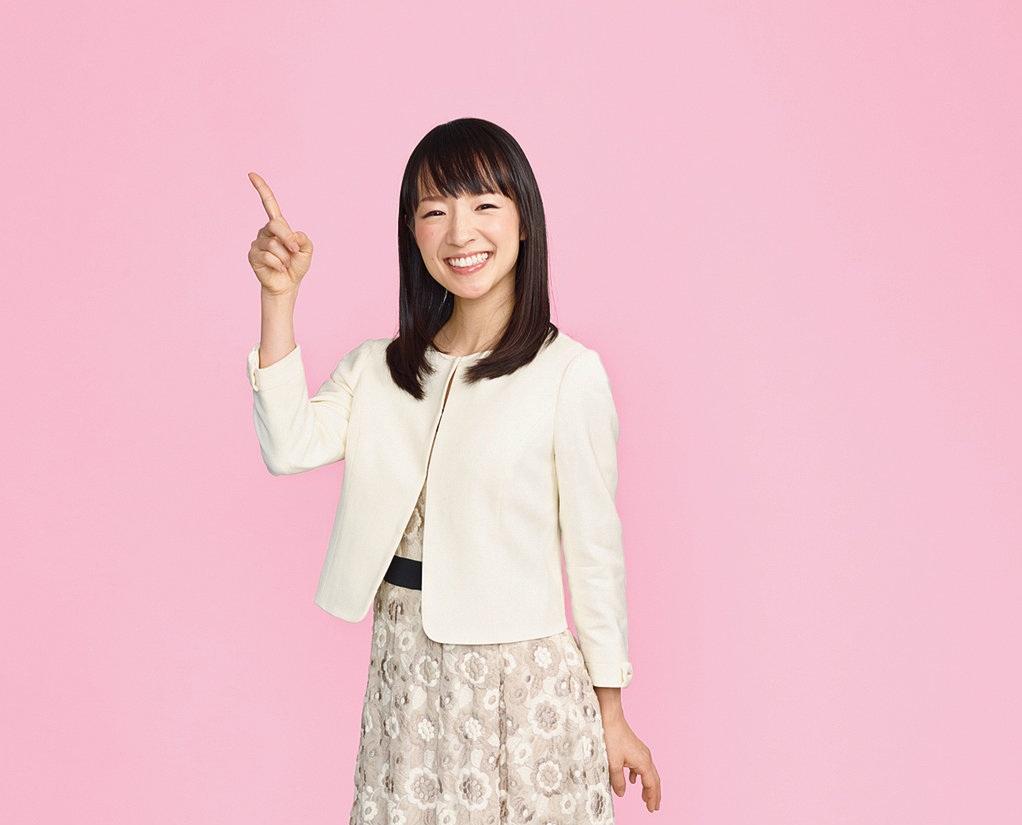
Yes, it’s true that those of us in the business of corporate social responsibility and Purpose could use a little of her magical art of tidying when it comes to saying good-bye to the ‘make a difference’ programs, initiatives, galas or philanthropic events that are neither effective for delivering long term, measurable and systemic change, nor do they spark much joy. In fact, the CSR and Purpose segment is the ideal place for the Japanese guru and Netflix star to work her Shinto-inspired approach to thanking, then tossing aside the old cause-marketing, philanthropic, win/win, or Buy1:Give1 ideas that once served us, but no longer do. Imagine Marie Kondo in the boardroom, asking us to throw our presentations, decks and calendars full of fundraising events, conferences, fun runs, TED talks and tourism junkets for _____cause, into the middle of the room, then demurely asking, ‘do these spark joy’? The simplicity of a tidying exercise like this gets to the heart of the real purpose – who do we serve; what are we trying to improve; and do our efforts actually have impact? It turns out, that those of us who work in CSR and Purpose and those who participate in meaningful social change work know that genuine purpose stands for something. It focuses on long term results and reaches beyond the product, the gala, the quick fix or the press release. It lasts. Real purpose work carries down to every worker, every benefit, policy, supplier and community member. Purpose is about the whole eco-system of that company and the way it makes people’s lives genuinely better. This is the kind of social good that impacts deeply, and sparks joy widely. As meaningful connections are increasingly forged between companies, non-profits and government agencies to solve the big challenges of our day, the KonMari method could be the tool that enables leadership to say ‘no’ to the shallow, and to embrace those opportunities that are bigger than their individual institutions. That’s the kind of life-changing magic we could all embrace. All Bogs
GILLETTE ADVERTISES A MAN’S PRODUCT BY TALKING TO WOMEN
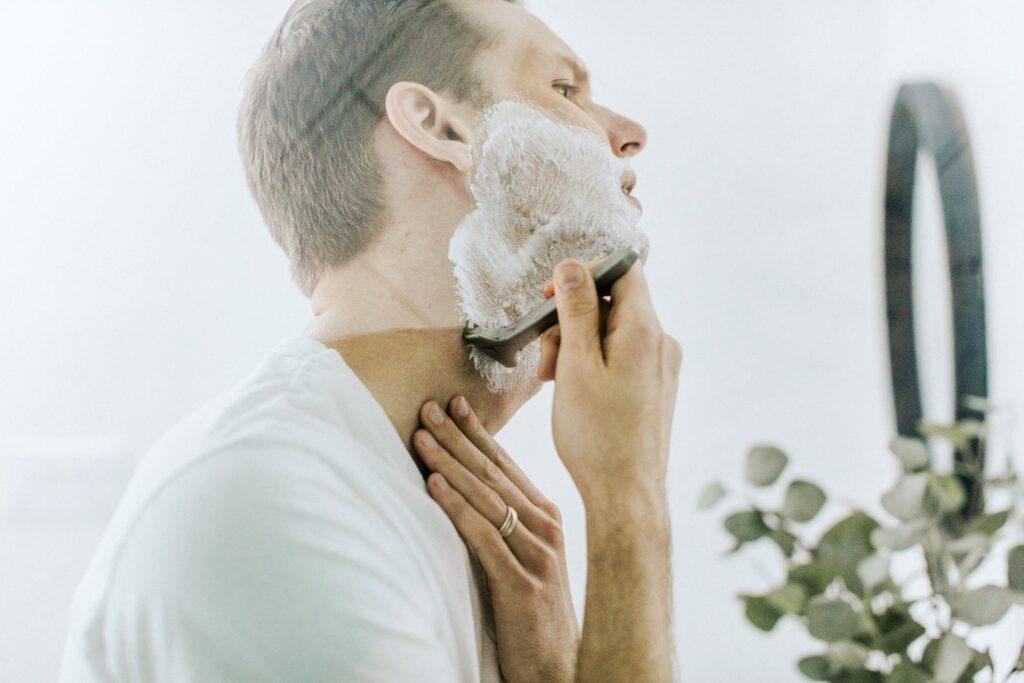
Last week, Gillette’s marketing team put out an ad aimed at raising the bar for men and encouraging them to be, ‘your best selves.’ All of a sudden social media was buzzing with frenzied consumers speaking out against the company, while others praised the brand for taking a stand. You would have thought that the razor giant was asking hipsters to ditch their beards and start shaving again for all the hysteria that the ad attracted. The tweets began, the hate and boycott threats followed, and one critic of the ad, Brian Millar, mansplained in Fast Company how the ‘purpose’ strategy backfired on Gillette and may not have been the best way to engender customer loyalty. That is, unless of course you like the ad, which plenty of people seem to, (men included). In his article, Millar cites poor purpose examples from other brands like J&J, Starbucks and State Street, ridiculing their soft language like ‘putting people first,’ and ‘nurturing the human spirit’ (shocking ideas, I know). Millar then exposed these same bad corporate players by digging up examples of their poor social responsibility through examples of tax evasion and underpaying women. Too bad he left out human trafficking, environmental degradation, resource depletion, inequity, or any mile long list of corporate infractions that occur in most corporations around the world. His tongue and cheek characterization about the purpose trend and the Gillette ad example: “the world’s top companies staring nobly into the middle distance, it seemed to be the dawn of something magnificent: capitalism with a soul. LOL, just kidding.” And kidding, he must be. The thing is, Millar’s own communications firm works to create ads that have to pass his firm’s test. Corporate social responsibility rigor? Other responsible standards or certifications? Well, not exactly. Millar’s communications firm puts his clients through the FUBI filter. Yes, ‘FUBI’, at Millar’s firm, the Paddle Group, stands for “Funny, Useful, Beautiful, and Inspiring.” How endearing. How genuine. This test is clearly so much more authentic than those purpose-driven brands seeking to capture those millennials who actually care about things like gender equity, fighting sexism and taking a stand about something like the environment, climate change or diversity. The thing is, change is slow, especially in global corporations or their advertising and marketing depts. There are a few good ones, (he mentions Patagonia, the best example). And while some companies are more diligent at being less bad than others, most brands have a long way to go. That said, pressure from consumers to clean up their act, is part of driving real change. Let’s now take purpose off the table and imagine that we put Gillette’s ad through Millar’s firm’s FUBI filter for the ad. Funny? I don’t know about you, but any ad for men’s razors that opens with embarrassing news reports on men behaving badly as his woman kisses him on the cheek while he shaves, and a deep voiceover comes on asking smoothly, “Is This The Best A Man Can Get?” That seems pretty funny to me. Ok, sarcastic, sure but I’m laughing inside. (And I bet every bad-acting guy out there is too.) Useful? I bet millions of women are thinking it’s pretty useful having examples of blatant and run amok sexism pointed out in a TV ad, the kind that women live with everyday. From the boardroom to a child’s TV cartoon, examples are laid out frame by frame for every guy to both cringe at and see himself in one of many everyday situations that go on, in case he doesn’t remember. But we women do remember, so this outdated idea that ‘boys will be boys’ could be useful for guys to take in. Beautiful? To me, there is nothing more beautiful than an NFL player exclaiming, ‘Men need to hold other men accountable.” Inspiring As for inspiring, I suppose it depends on the viewer. Everyone is inspired by different things. My male and female friends and colleagues seem pretty inspired seeing Gillette take on sexism and bullying post #metoo. Maybe Millar’s firm didn’t watch the ad with an audience to gauge how inspired people might feel about with messaging that holds men to a new standard. Maybe Brits are simply more cynical. I know this, though. “Purpose”, Millar claims, “is something you believe, not something you make up one day as a marketing strategy.” He’s right. I believe in purpose and in brands that stand for things. I also try to support those who are less bad than others. And even though Millar is in the business of making up marketing strategies like FUBI, last I checked, ‘funny’, ‘useful’, ‘beautiful’ and ‘inspiring’, like purpose, are all worth believing. https://www.youtube.com/watch?v=koPmuEyP3a0&t=7s All Bogs
LIPSTICK, GENDER EQUALITY AND RBG
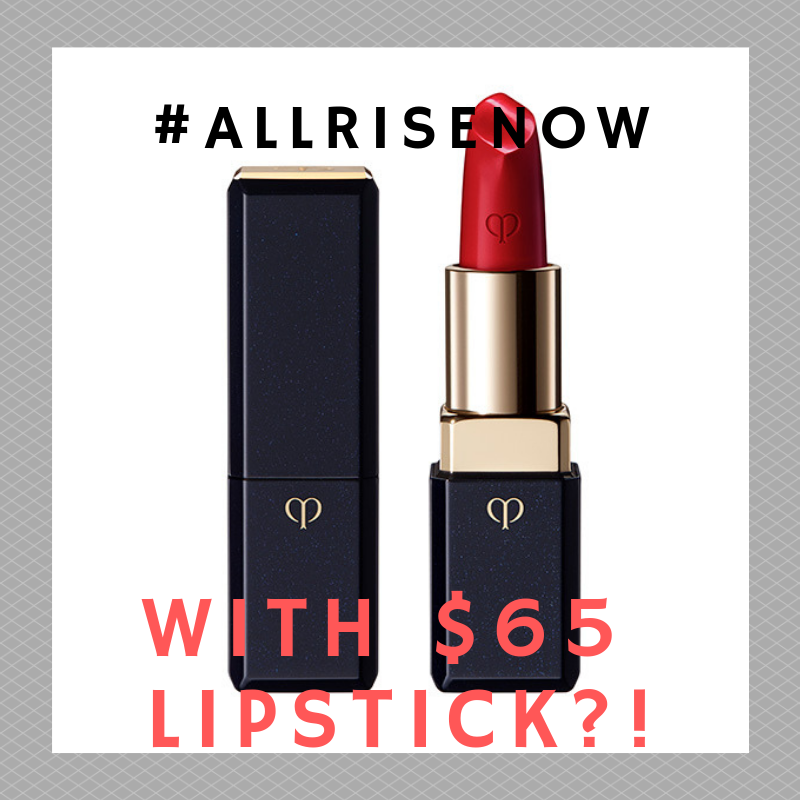
I’m speechless over lipstick. Actually, it’s the act of encouraging women to buy $65 lipstick as a way to express their support for fighting gender discrimination in the name of Justice Ginsburg and her accomplishments. Thank you, Hollywood. The cause marketing campaign, a joint project of Participant Media and Focus Features, launched the campaign as a holiday shopping initiative before the Christmas day release of the film to encourage women to support the Women’s Rights Project of the ACLU by shopping for high end fashion, beauty and accessories. See here The hash tag, #AllRiseNow, encourages us to shop, share and be empowered by the portion of proceeds that will go to the ACLU from our luxury purchases. Yup, $65 lipstick, not to mention a $38 scrunchy (seriously?), and expensive designer clothing, beauty products, and other accessories for our ‘holiday purchases’ are how we are to rise to our feminist greatness. The #allrisenow call to action on the site: “Ruth Bader Ginsburg paved the way for equal rights. Now we must “All Rise” and continue the fight. Show your support for equality while giving back with the “All Rise” collections. They’re the perfect gifts for your favorite feminists!” We must. Though you may not speechless, I bet you could have imagined the campaign selling some of the great RGB pins that have been in vogue the last few years. I mean, do we think that this is what RBG had in mind for a campaign about her rise as a young feminist? Even as a co-founder of the ACLU Women’s Rights Project, the group responsible for systematic legal reform through the courts in the areas of women’s equality and economic rights, do we think RBG might have suggested luxury shopping as the way to learn about the principles that persuade courts to utilize both the Constitution and federal statutes to strike down legal barriers to full equality for women? With her recent documentary, I can more imagine gym memberships as a way to be strong, like her, into her 80s no less. The point is, a message from her colleagues at the Women’s Rights Project are more in order rather than the ones suggested on the website – become empowered! Dress like the young Ruth! Support these glamorous fashion and beauty brands, all while giving back to the ACLU! Lipstick for only $65! Forget that we are barely beyond the Kavanaugh hearings, that we are in the midst of #metoo or that the historical women’s March took place recent enough that we still have our pussy hats, signs and t-shirts hanging around. Despite the climate of the times, cause marketers at Participant and Focus decided we might be ready for a bit of glam shopping when it comes to raising our awareness about gender inequality and the young Justice Ginsburg. In fact, they decided the #allrisenow call to action would be to gift our feminist friends with luxury clothes that young Ruth might have worn as she worked her way, against all odds, like the glamorous Felicity Jones in the film, to the highest court in the land. Full disclosure – I am a social impact marketer by trade and have seen my fair share of cause marketing campaigns and worked on countless more. That said, I know when we are aiming short (in this case, for girls and women), when I see it. What makes for a good cause marketing campaign is a natural alignment between the company(s) and non-profit(s) or campaign(s), not dumbing down an issue but rather providing action steps as well as tools and knowledge about how the audience can get involved, especially without paying, A not-so-good campaign does the opposite – tacks on a small percentage of proceeds, offers a token Buy One/Give One model or simply asks us to shop, and we will give a portion (unclear) to the charity. The small halo effect designed for us to feel good about the brand and better about our shopping is short lived or worse, like this one, detracts from the potential impact of the message. Lipstick can be an effective tool for social change. Mac did it right in the 90s with VIVA GLAM, raising money and awareness to HIV/AIDS at a time when the pandemic was affecting the fashion community as well as the broader world. Then and today, 100% of the purchase price of any VIVA GLAM product goes toward the M·A·C AIDS Fund. Women and men seek it out for that reason alone. I’m not cynical by nature. In fact, I am quite optimistic about businesses getting into the business of social change. I often give companies that try to do good the benefit of the doubt. But here is where I get derailed: – When wealthy fashion and beauty brands align with Hollywood films and studios to plead for women’s dollars as the gateway to social action. It’s backwards thinking. That we ‘must rise’ through our purchase power in order to fight gender discrimination not only leaves me speechless, but somehow got lost on the marketing team putting this idea together. The day we don’t have campaigns and films equating our success with campaigns to ‘dress like young Ruth’, by wearing the perfect shade of red lipstick, heels, gloves, bag and hat, will be the day when we are making just a little bit more progress. All Bogs
DEFINING WHAT’S TRU?
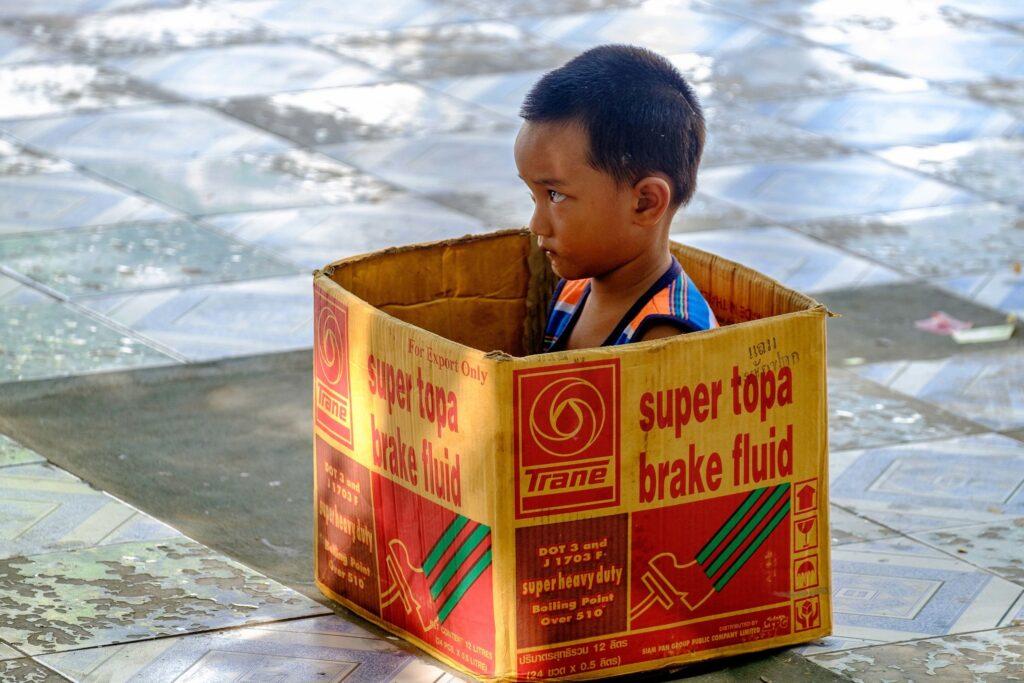
Someone asked me what TRU meant the other day, and I described what sounded like an Avengers sequel, when we deploy into an organization in order to restore good from a brand’s unintended evil consequences. It started simply enough. I started with defining our process of social brand innovation. “It’s a process”, I told him, “of learning to undo old definitions of social impact and change, and engaging in the best vision for your organizations so that you can have the best possible impact going forward.” Then I brought in the TRU part – about being TRU to everyone you serve. To define social brand innovation, I started with the phrase itself, skipping to the end – innovation, which is about changing the current path of your offering (product, service or idea). ‘Brand’ is a gut feeling or perception about your offering. And winding up at the beginning, ‘social’ in this case, describes the brand. A social brand is one that exists for the purpose of social impact or change. “Social brand innovation then” (trying to bring it home), “is a process of becoming TRU,” I explained. Going further to explain that a process is not a fancy logo, a refresh or a campaign, (though all those things can be part of the process), but at its essence, the process of becoming TRU is one of changing, to be better for your intended social impact or good. Getting some nods of understanding along with a mildly blank expression, I then thought of a recent example. I explained that tourism grew into many kinds of sustainable, responsible tourism companies and organizations including a segment called voluntourism. In voluntourism, individuals sign up and pay for the opportunity to travel across the world and offer their time for free to do social impact work, to help or volunteer with an organization. Yet, it is often the case that social brands can go awry with unintended consequences, I continued. I quoted my friend from a recent talk he gave at CSRAsia. “Orphanages in SE Asia have become a business for volunteer tourism. There aren’t enough orphanages so children are bought and taken from families to cater to this demand.” -Sebastien Marot, Friends-International. My friend’s expression was not confused anymore. He totally got it. Sebastien, from the above example, has committed his life to helping street kids find purpose worldwide. As the head of an independent NGO, his work, in this case, is the consequence of a social brand’s business offering. Sure, it’s an extreme example, but many social brands don’t actually know the unintended consequences of their products and services. This is where the innovation part comes in. Getting TRU, and staying TRU, is about evaluating your organization’s intended good, with the real impact your brand is having. Most of us are drawn into social brands – we want to do good with our purchasing power and to be part of a social brand’s halo effect. But to really connect with your brand stakeholders, to better understand those you serve – their experience, their empowerment buttons and their engagement tipping points, social brand innovation is critical. Then, once the channels are transparent, current and relevant, your brand followers become brand enthusiasts – and really ramp up your reason for being. All Bogs
WE ALL COME INTO THE WORLD INHERENTLY GOOD, BUT THEN WHAT HAPPENS?

A few years ago I had both the privilege and the honor of meeting His Holiness the Dalai Lama. In fact, I was able to do this more than once while working with an organization he co-founded aimed at researching the science behind kindness and compassion. I have a photo of him on my laptop that I often look at with awe. It illustrates a model of a man in his 80s, who has continually nurtured the innate kindness, love and goodness we were all born with, and who exudes the unconditional love of a small child with the wisdom of an eminent scholar. In essence, he works hard, and believes we all can, to cultivate and learn this culture of care. Caring for others with love, he believes, will heal the world. I can’t describe what it felt like sitting in a room with only a few others as he shared his passion by looking directly through all of us, convincing us with the most powerful proof – his own being. He’s the Dalai Lama, sure, but he was sharing the science of what it takes to be kind, empathic, compassionate and being it, at the same time. (Like I said, hard to describe.) And yet, the entire reason we were there, in that room crafting a plan to spread kindness and goodness to schools globally, was that the scientists in the room had worked for decades to research how the neuroscience of this works. In fact, the science of neuroplasticity and of the cultivation of empathy, compassion and generosity is a large field of science, growing each year. The neuroscience shows that our brain plasticity as young children is the ideal time to encourage this lifelong skill. Research also shows that institutions of all kinds, and their employees, patients and students have benefited from the practices of kindness, compassion, generosity and mindfulness in the workplace, hospitals, schools and universities. Dr. Richie Davidson, a leading researcher on this and also in the room with us that day, argued an even stronger case for starting this at a young age. “There is an increasing range of hard-nosed scientific research that clearly indicates that we are born with an innate bias, an innate propensity for kindness. Very young infants of six months of age prefer to watch interactions that are kind interactions – cooperative, helping. They prefer that over interactions that are aggressive and antagonistic encounters.” So given that we are born with these skills, I kept wondering if this is why I have often believed that humans, more often than not, are drawn to doing the right thing when it comes to being kind, compassionate, generous or loving, even if our skills don’t feel very Dalai Lama-worthy. After all, I work in corporate social responsibility, with purpose-driven brands and organizations that are taking on the most intractable issues like child labor, climate change or food security. Yet time and time again, it is the stories of resilience, hope, courage and bravery that inspire us, compel us to do good, and seek the action for others to join. In these times, finding the goodness in people, companies, government and society feels hopeless to many. I remain hopeful, however, of the innate goodness that Richie’s research (and His Holiness) convinced us resides inside us all since our earliest days. It’s the hope that is there to be nurtured, exercised, dusted off and coaxed out, the way babies smile at us without knowing anything about us. Trends come and go, but that innate nugget is always there, waiting for the moment to be encouraged. It is the brands that do this cultivating, encouraging and work that ultimately will win. For we all want to be connected to the good guys, and to feel our goodness ourselves. I believe this because I have seen it in the work that I do for years. I have seen companies do the right thing, even though it cost them money. I have seen non-profits take on hunger, slavery, endangered species and conservation because they believe they can solve these problems, against tough odds. And I believe that when each of us is giving to others, in small ways, we feel better. When we experience goodness ourselves, or our customers, students or patients experience it, it spreads. Just like the Dalai Lama showed us. His Holiness the Dalai Lama, 2015 All Bogs
